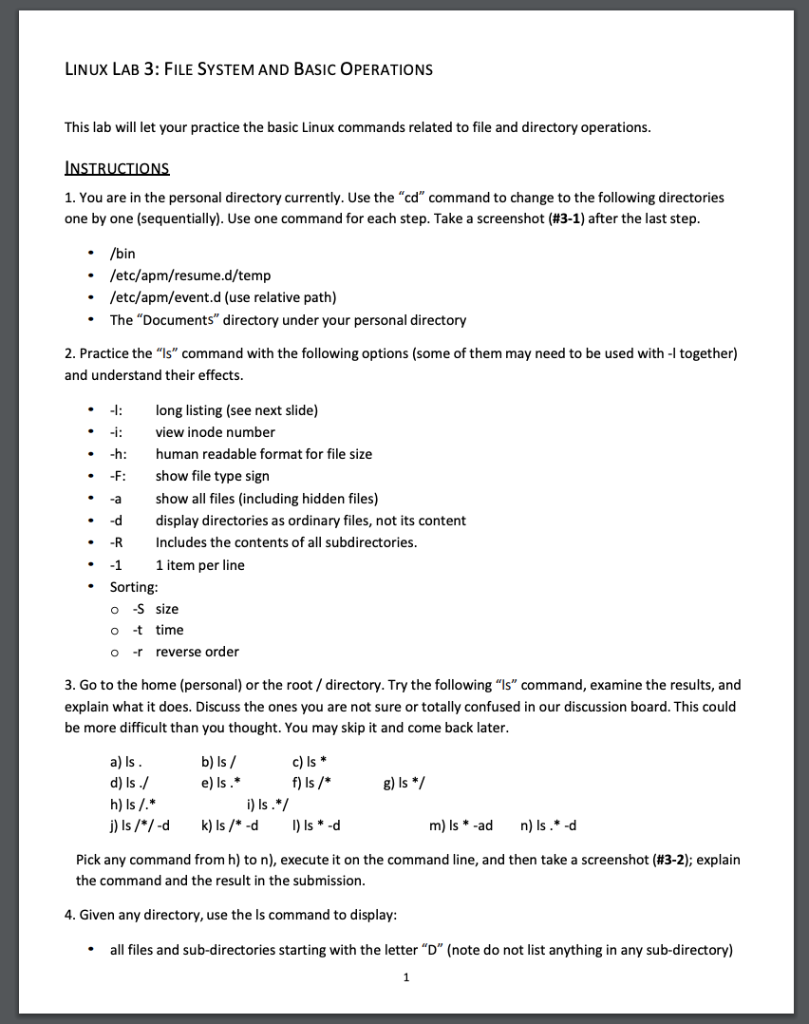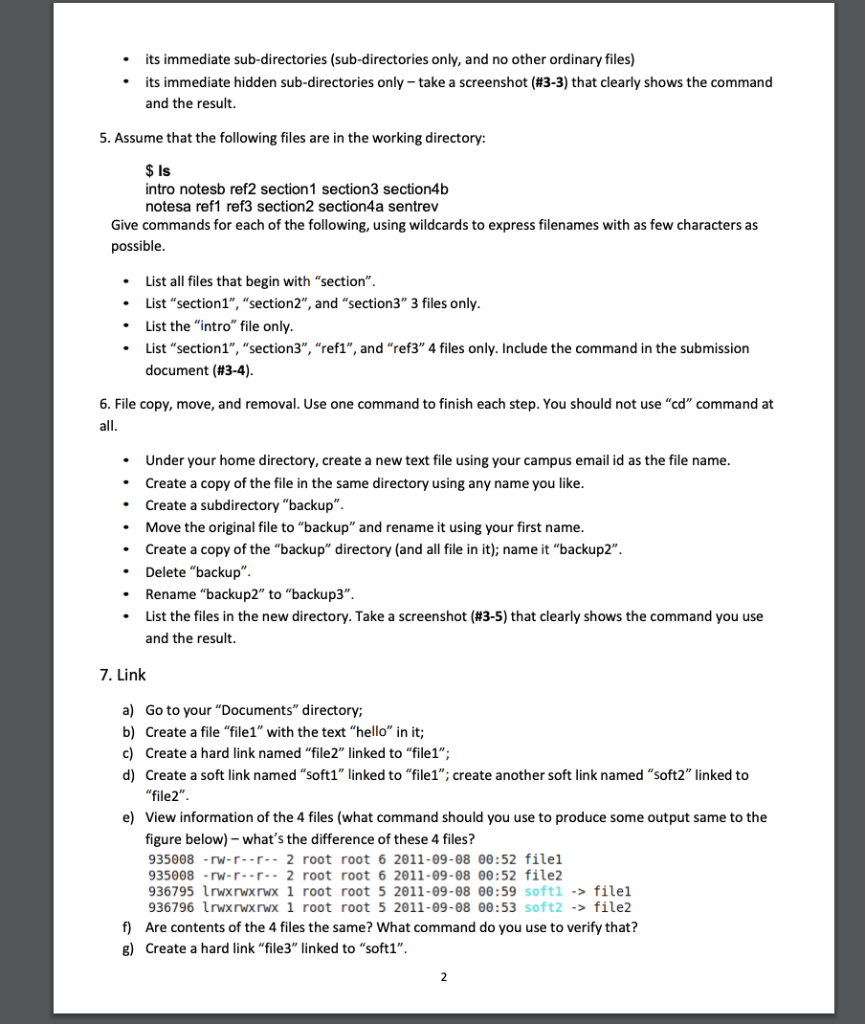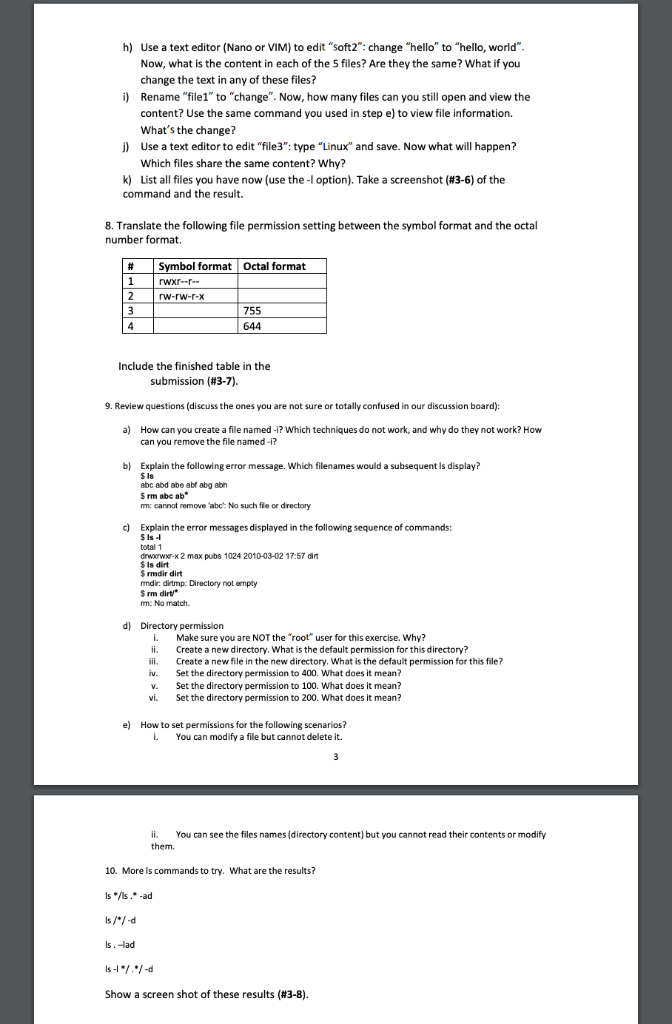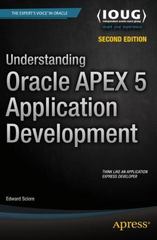Need commands for the following:



LINUX LAB 3: FILE SYSTEM AND BASIC OPERATIONS This lab will let your practice the basic Linux commands related to file and directory operations. 1. You are in the personal directory currently. Use the "cd" command to change to the following directories one by one (sequentially). Use one command for each step. Take a screenshot (#3-1) after the last step in /etc/apm/resume.d/temp /etc/apm/event.d (use relative path) The "Documents" directory under your personal directory 2. Practice the "Is" command with the following options (some of them may need to be used with-I together) and understand their effects. . long listing (see next slide) view inode number .h: human readable format for file size F show file type sign -a show all fles (including hidden files) .-d display directories as ordinary files, not its content .-R Includes the contents of all subdirectories -1 1 item per line Sorting: o -S size o t time o -r reverse order 3. Go to the home (personal) or the root/directory. Try the following "Is" command, examine the results, and explain what it does. Discuss the ones you are not sure or totally confused in our discussion board. This could be more difficult than you thought. You may skip it and come back later a) Is d) Is ./ h) Is/* j) Is/1-d k)Is/*-d b) Is / f) Is/ g) Is*/ i) Is.*/ Is-d Pick any command from h) to n), execute it on the command line, and then take a screenshot (#3-2); explain the command and the result in the submission 4. Given any directory, use the ls command to display: all files and sub-directories starting with the letter "D" (note do not list anything in any sub-directory) Use a text editor (Nano or VIM) to edit "soft2": change "hello" to "hello, world" Now, what is the content in each of the 5 files? Are they the same? What if you change the text in any of these files? Rename "file1" to "change". Now, how many files can you still open and view the content? Use the same command you used in step e) to view file information. What's the change? h) i) j) Use a text editor to edit "file3": type "Linux" and save. Now what will happen? Which files share the same content? Why? k) List all files you have now (use the-l option). Take a screenshot (#3-6) of the command and the result. 8. Translate the following file permission setting between the symbol format and the octal number format. #Symbol format Octal format 2 rw-rw-r-x 755 644 Include the finished table in the submission (#3-7). 9. Review questions (discuss the ones you are not sure or totally confused in our discussion board): a) How can you create a file named-1? Which techniques do not work, and why do they not work? How can you remove the file named-i? b) Explain the following error message. Which filenames would a subsequent ls display? S Is abc abd abe abf abg abh $ rm abe ab m: cannot remove abcNo such fle or drectory c)Explain the error messages displayed in the following sequence of commands: S is total 1 drwxrwxr-x 2 max pubs 1024 2010-03-02 17:57 dirt $ Is dirt $ rmdir dirt mdir: dirtmp: Directory not empty S rm dirt m: No match d) Directory permission i. Make sure you are NOT the "root user for this exercise. Why? ii. Create a new directory. What is the default permission for this directory? i. Create a new file in the new directory. What is the default permission for this file? iv. Set the directory permission to 400. What does it mean? v. Set the directory permission to 100. What does it mean? vi Set the directory permission to 200. What does it mean? e) How to set permissions for the following scenarios? . You can modify a file but cannot delete it. ii. You can see the files names (directory content) but you cannot read their contents or modify them. 10. More Is commands to try. What are the results? Is.-lad Show a screen shot of these results (#3-8)









